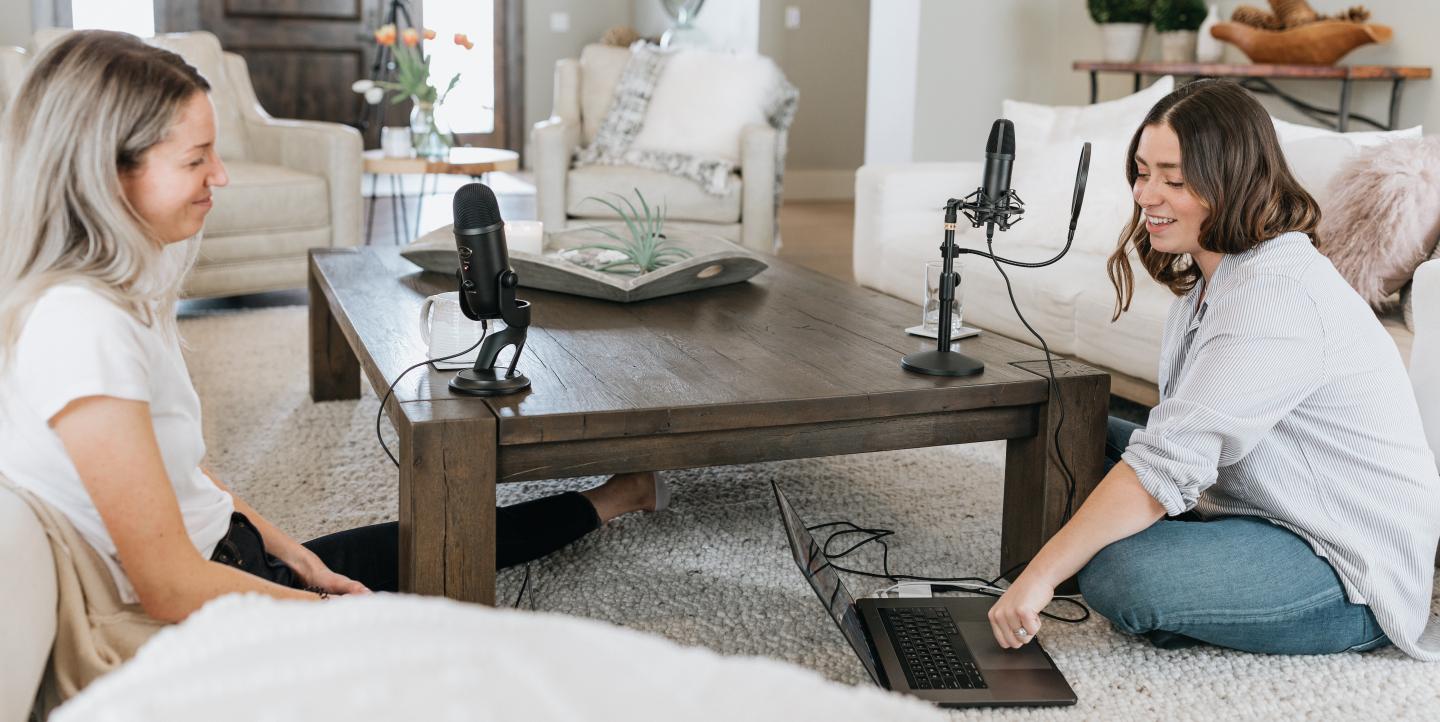Podcasts are a popular medium in journalism with few barriers to entry. It can be easy to start anywhere.
“The only requirement to start a podcast is to be passionate about what you choose,” said Padma Priya, editor in chief and co-founder of Suno India, during a recent ICFJ Global Crisis Reporting Forum webinar.
Suno India is a multilingual and multigenerational podcast platform dedicated to shining a light on underrepresented and underreported stories through audio journalism.
Priya co-founded Suno India in 2018 upon realizing that many important stories at the grassroots level were not making it to Indian mainstream media. For Priya, podcasting was not only the perfect medium for covering the sensitive topics she wanted to tackle, but also because, in India, large private television channels are inundated with narratives driven by political agendas.
“The audio medium helps people to also slow down, take a pause, and listen to the conversations. And to not also be reactive,” Priya said.
Developing a concept
While podcasts can be as varied as the people who create them, every podcast must have a consistent goal and purpose. Podcasters must know what topics they will choose, and why they are choosing them, in terms of content. “Once you answer the why and what, the rest will fall into place,” Priya said.
Whether the podcast aims to spread an important message, generate leads for a business, or just for fun, market research must be done about what’s already out there and what value a new podcast can add. Most importantly, “think about how your podcast stands out,” she said.
Choosing a format for your podcast is the second consideration. Podcasts can be of many types: interviews, scripted nonfiction, news recaps, educational podcasts or scripted fiction, among others. “Choose a format that fits what your podcast is about and fits your topic,” said Priya.
Every podcast can benefit from editing. For instance, podcasts should be no longer than they absolutely need to be. The purpose, according to Priya, is to ensure that the listener stays engaged throughout.
Recording equipment and software
When Priya co-founded Suno India, the team was a bootstrapped startup. But because podcasting is a medium with a low barrier to entry and with few overhead costs, a low budget isn’t as much of a barrier as it would be with other mediums. “Remember, your content is the most crucial part,” she said.
Priya recommends starting with low-cost equipment such as your phone, Zoom conferencing, good headphones, and a lapel mic or personal voice recorder. A pop filter for your microphone is also a useful addition to ensure good audio quality.
Writing an outline can help avoid rambling and reduce editing time. Picking the right space that ensures sound quality, such as a closet or other muffled space, can make editing easier, too. Free editing software, such as Audacity, is easy to download and can be easily learned with tutorials on YouTube.
“It’s not rocket science,” said Priya. “The beauty of podcasting is you can do it from pretty much anywhere once you figure out how to eliminate the unnecessary sounds.”
Especially at the beginning of podcasting, trial recording and editing is the key to success. Have a checklist for yourself and interviewees to ensure the best sound.
“Even the best podcasts had to start with a few bad episodes and bad edits,” she said. "Lots of podcasters give up because things get technical.”
Editing and uploading
Once recorded, it is important to segment the episode and clean up the audio. Insert only necessary sounds and music, for instance in intros or transitions between podcast segments.
Adding metadata such as ID3 tags and using the mp3 format and correct bitrate will ensure the file is easy to use. Adding artwork, categories and descriptions to your upload also helps the podcast reach new audiences.
“It’s the behind-the-scenes process that requires a little preparation, but don’t let the process overwhelm you: the process is here to help you,” Priya said. She also urged podcasters to read the terms and conditions on a free platform carefully before uploading to ensure that you do not give up the publishing rights to your work.
Launching
After being listed on local and international aggregators and having a few episodes ready, it’s time to start spreading the word in your community. Priya found it useful to find those who are already passionate about the topics of your podcast online. Niche topics always do well. Adding a companion newsletter or blog, posting on social media, and authoring press releases can also help market the podcast.
At the start, even a few hundred views are a good metric, as you are competing with the listenership of many podcasts. Continuing to leverage communities can further propel your podcast forward to new engagement levels.
By finding the right topic and audience, a good podcast can address a topic that doesn't usually get attention, or that a certain community finds important. “When you are doing this, think about what added value you are giving to communities,” Priya said.
Photo by Kate Oseen on Unsplash.


